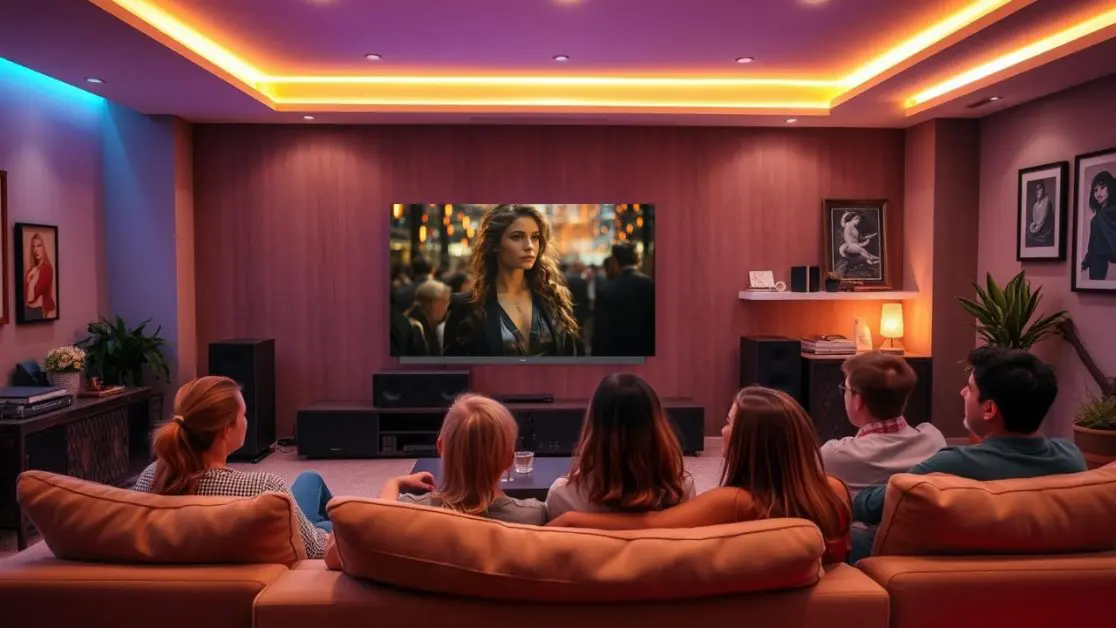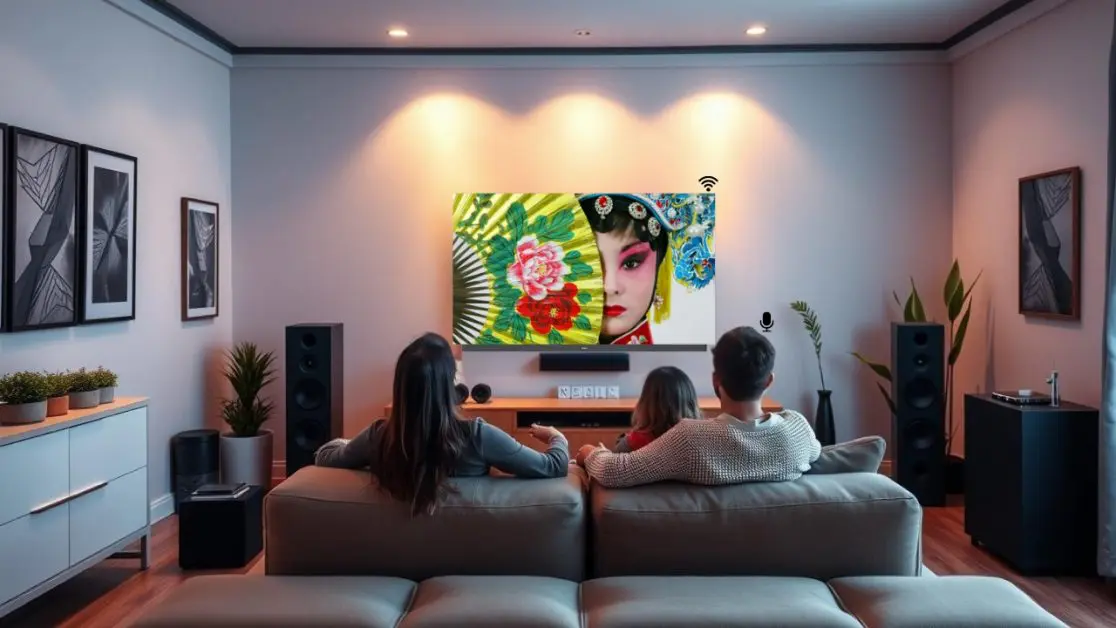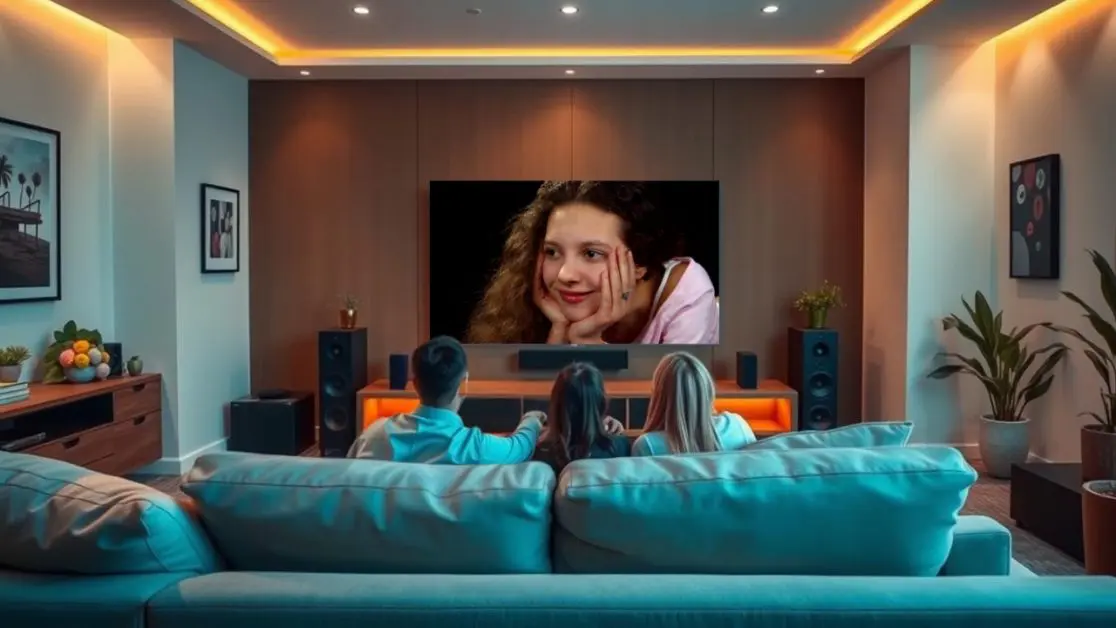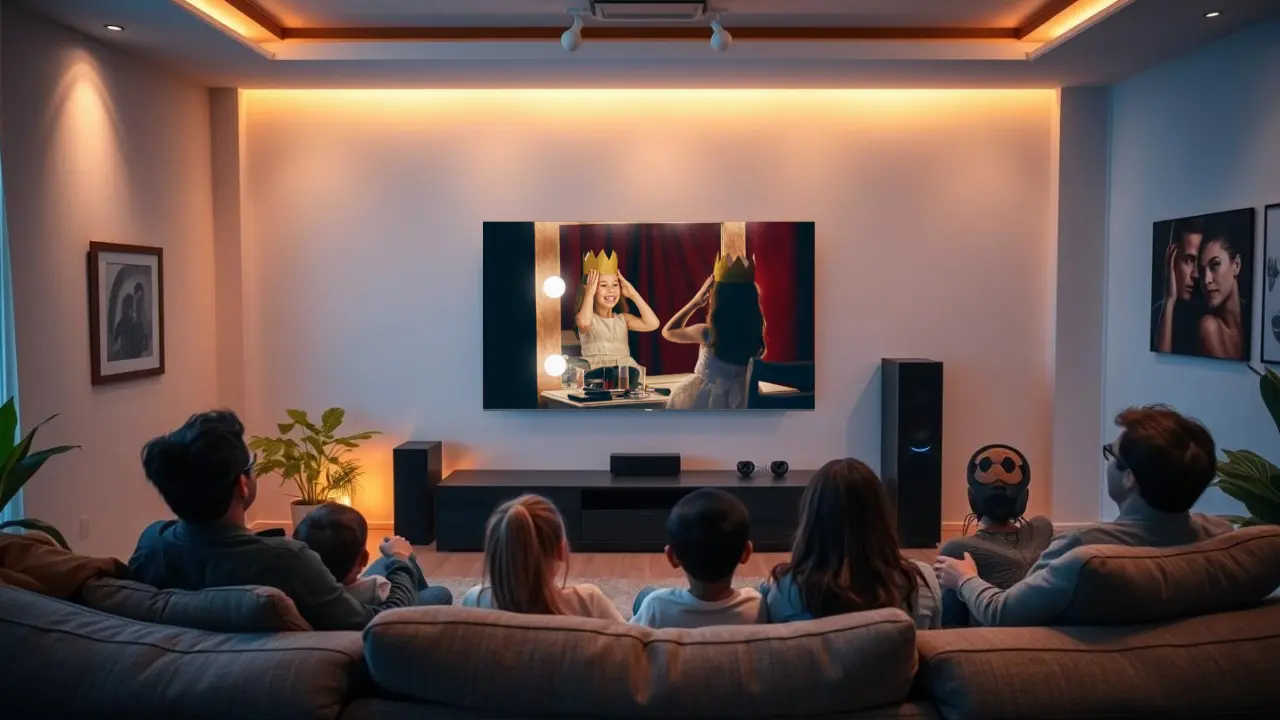You’re building your dream home theater. You want that jaw-dropping, movie-theater experience, right?
But here’s the thing: picking the right TV is like choosing the perfect foundation for your whole setup. You’ve probably heard about OLED and QLED, and you’re wondering, “Which one’s actually better?”
OLED gives you crazy deep blacks and amazing contrast, while QLED cranks up the brightness and color. Depending on what you watch, where your room is, and what you love about movies, one might be way better for you.
So, let’s break it down, no tech jargon, just straight talk. By the end, you’ll know exactly which TV will turn your living room into the ultimate movie night destination.
OLED (Organic Light Emitting Diode)

OLED (Organic Light Emitting Diode) technology features pixel elements that generate their own light independently. This ability allows OLED displays to completely shut off individual pixels, creating perfect black levels and superior contrast. These features enhance audience immersion during content viewing. OLED displays deliver outstanding performance due to their deep black visibility, vibrant color presentation, and broad viewing angles.
QLED (Quantum Dot Light Emitting Diode)
QLED (Quantum Dot Light Emitting Diode) technology, powered by LED backlighting, improves color accuracy with quantum dots as the light-emitting mechanism. QLED displays offer maximum brightness, making them ideal for well-lit areas. They excel in color definition and image sharpness, delivering a visually striking experience.
OLED vs. QLED: Key Comparisons
Picture Quality
| Feature | OLED (120Hz) | QLED (144Hz) |
| Black Levels | Perfect blacks (self-emissive pixels) | Deep black contrast, close to OLED |
| Color Accuracy | Rich, natural colors | Bright, punchy colors with quantum dots |
| Brightness | Slightly lower brightness compared to QLED | Higher brightness for well-lit rooms |
| Contrast Ratio | Unlimited contrast due to flawless black levels | High contrast but not as precise as OLED |
| Viewing Angles | Wide angles with minimal color shift | Minor color degradation at extreme angles |
Motion Handling & Refresh Rate
Both OLED and QLED televisions offer smooth motion handling for fast-paced entertainment, thanks to MEMC 120Hz technology. However, QLED has an advantage in gaming due to its 144Hz refresh rate, providing a slightly smoother experience for high-speed content.
Gaming Performance
For gaming enthusiasts, both OLED and QLED models feature advanced Game Mode, VRR (Variable Refresh Rate), and ALLM (Auto Low Latency Mode). These features reduce input lag and enhance visual clarity. OLED panels provide superior motion clarity due to their instantaneous pixel response, making them ideal for competitive gameplay.
Smart Features & AI Integration

Both OLED and QLED TVs come with Google TV, offering personalized recommendations and access to a vast library of applications. Additional smart features include:
- AI-powered voice commands for managing smart home devices and content.
- 3GB RAM + 32GB ROM configuration for seamless multitasking and fast app loading with ample storage.
Audio Performance
A home theater setup requires immersive sound to complement high-quality visuals. Here’s how OLED and QLED compare in audio performance:
- OLED (Sound by Harman Kardon – 50W): Delivers rich, immersive audio with clear highs and deep lows.
- QLED (Dbx-tv Audio Technology): Offers professional sound control for an enhanced audio experience.
- Harman Kardon vs. Dolby Vision: OLED models with Harman Kardon sound systems provide superior audio compared to QLED models with Dolby Vision support.
Dolby Vision & Atmos Support
Both OLED and QLED support Dolby Vision IQ and Dolby Atmos, ensuring a cinematic audiovisual experience. These technologies enhance picture quality and sound output, making them suitable for viewing in both bright and low-light conditions.
Which One to Choose?

Choose OLED if:
- You prioritize premium sound quality, deep blacks, and a high contrast ratio.
- Wide viewing angles are essential for your setup.
- You seek a cinematic experience with high-quality stereo sound.
- Your home theater is in a dimly lit or artificially controlled lighting environment.
Choose QLED if:
- You need a TV with high brightness levels for well-lit rooms.
- You frequently watch sports or play games that benefit from a 144Hz refresh rate.
- You require a screen with minimal risk of image retention.
- You prefer a more budget-friendly alternative to OLED.
Final Verdict
For those seeking the best home theater experience with deep blacks and immersive sound, OLED TVs are the ideal choice. However, if you need a display suited for bright rooms and gaming applications, QLED TVs offer high refresh rates, superior brightness, and vibrant colors.
Haier India: Elevating Home Entertainment
Haier India offers a wide selection of OLED and QLED TVs, featuring cutting-edge technology for an unparalleled viewing experience. Whether upgrading your home theater or searching for the perfect display, Haier’s latest models ensure outstanding picture quality and advanced smart features. Explore the newest television lineup today to enhance your home entertainment experience.

